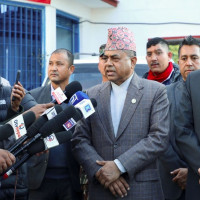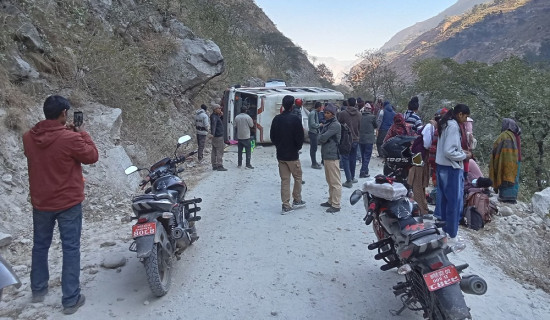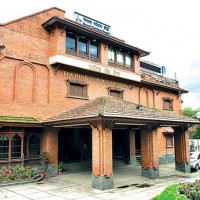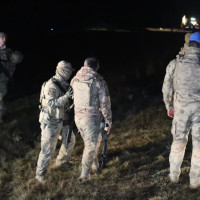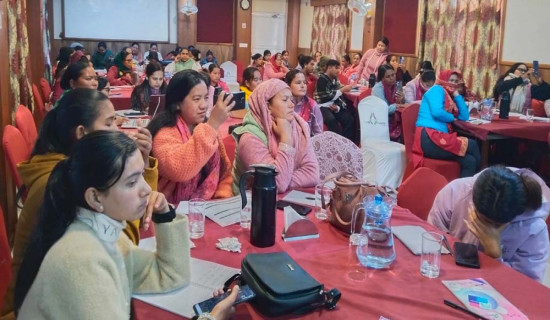- Thursday, 25 December 2025
Dhye Dreams: Story of mountain village hit by climate change
Kathmandu, May 16: Climate change has sparked heated discussions worldwide and Nepal has been no exception.
Many rural areas, particularly in the mountain regions, have lost their authentic beauty and inhabitants, gradually transforming into barren lands, losing both their beauty and significance.
One such village is Dhye located in Upper Mustang at an altitude of 3,900 meters.
As per multiple studies, the people of the Dhye village are recognised as Nepal’s first climate refugees.
In the 27-minute-long documentary ‘Dhye Dreams’, director Shanta Nepali tries to highlight how climate change affects the lifestyle and culture of the Dhye dwellers.
The documentary ‘Dhye Dreams’ begins with the narration, “Deep in the rain shadow of Nepal’s Himalayan mountains in the ancient kingdom of Upper Mustang, the village of Dhye has lost much of its water and most of its people.”
As the water sources started drying up, crop production decreased, leading the people of that area to move to other villages and cities for livelihood. However, some people in the village have not been able to leave due to their ancestral legacy and love for their roots.
The documentary underlines the resilience of three women who prefer to stay in the village even though their family members migrate to other regions in pursuit of water, food and education.
Three women, Kunchok Dolkar, Lhakpa Choezon, and Sonam Sangmo, are portrayed as still connected to their roots, choosing to remain in the village.
“When there is no one, my friends would be a dog, cat, and cow,” says 35-year-old Lhakpa Choezon in a dialogue.
This emotional dialogue uncovers the persistent determination and deep emotional resilience of Himalayan women choosing to remain in their villages amidst the adversities of climate change.
Choezon is often busy with farming, husbandry,
and household chores and enjoys the serenity and peace of the village even though her heart yearns for her family.
She reminisces about the beauty of living with family and friends in the village but she had to send her children elsewhere for study as there is no school or teacher in the village.
Dolkar, aged 55, the matriarch of a large family of 13 left in Dhye village, lives alone most of the time as her husband and children moved to Chambaleh in lower Mustang in search of water, food, and education. Although they occasionally visit Dolkar in the Dhye village, she primarily resides there alone.
One part shows Dolkar’s husband, Jamyang Wangchuk, remembering the old days when he and others used to swim in a full pond, making the audience feel nostalgic and sad because it’s not like that anymore due to climate change.
Sonam Sangmo, a 40-year-old woman, is busy building a new life centered around apple orchards in Chambaleh, a place located at an altitude of 3,300 meters.
People from Dhey village shifted to Chambaleh and settled there, drawn by the water of raging rivers in Chambaleh, hoping to rekindle the hope of apple farming and other agricultural activities.
However, a flood in the Kagbeni River washed away houses and displaced people. Despite this, Sonam still wants to pursue her dream in the village.
This true story of these three women may seem simple, but they are the true victims of climate change.
The documentary highlights how the villages in mountain ranges are dying due to the lack of water resources, food, education and unpredictable weather patterns. Director Nepali greatly deals with the burning issues of climate change through these three women and the village.
The cinematography of the documentary is impressive, clearly highlighting the landscape of Dhye village and Chambaleh.
Even though this is a documentary, the audience can feel the emotions of these women, their endurance, and their sense of emptiness.
The film urges the concerned authorities to deal with climate issues which are deepening day by day.
Director Nepali also aims to show how the traditional culture and lifestyle of the village are changing because of the impact of climate change.



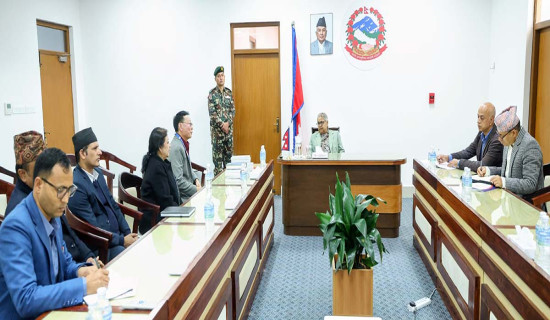
-square-thumb.jpg)
